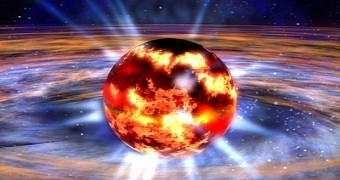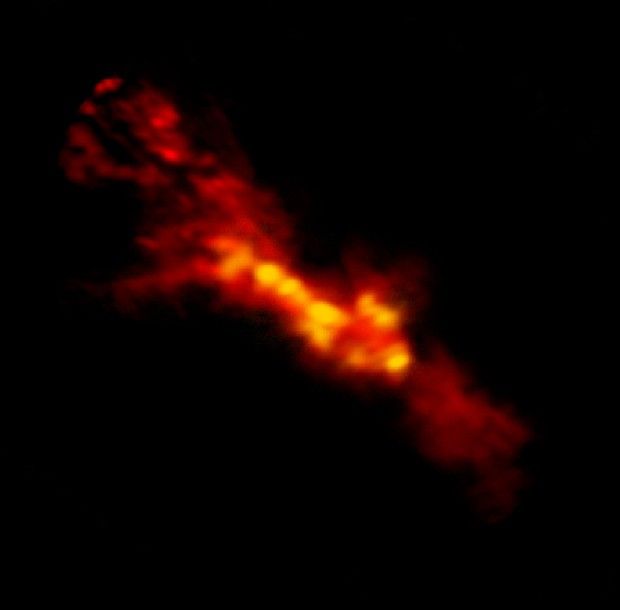In a new report, researchers with the National Radio Astronomy Observatory detail how, using the Atacama Large Millimeter/submillimeter Array in Chile, they managed to study star-forming cosmic clouds in unprecedented detail.
Even cooler, the astronomers say that the clouds that they studied are part and parcel of a so-called starburst galaxy, which they describe as a cosmic system able to birth stars thousands of times faster than regular galaxies like, say, the Milky Way do.
A better understanding of how stars form
As explained by scientist Adam Leroy with the Ohio State University in Columbus, US, stars are created from insanely dense clouds of dust and gas. Although all galaxies pack such clouds, just few of them birth stars at a freakishly rapid pace.
Apparently, these so-called starburst galaxies can cough out brand new stars at a rate about 1,000 times greater than that documented in the case of run-of-the-mill galaxies such as the Milky Way. The thing is that, for the time being at least, scientists don't quite know why this is the case.
Hoping to solve this puzzle, scientists used the Atacama Large Millimeter/submillimeter Array to study a disk-shaped galaxy known as the Sculptor, or NGC 253. This system is located at a distance of about 11.5 million light-years from our planet and is now undergoing intense star-formation processes.
Peering deep into the Sculptor's entrails
In the report detailing their work, the specialists behind this investigation explain that, with the help of the Atacama Large Millimeter/submillimeter Array, they managed to document a total of 10 different stellar nurseries inside their target disk-shaped galaxy.
What's more, the astronomers say that they even mapped the distribution and the movement of molecules inside these ginormous cosmic clouds that are now producing about an army's worth of new stars. This helped them better understand why the Sculptor is a starburst galaxy and not a regular one.
Long story short, it appears that the star-forming clouds the Sculptor hides deep in its entrails are not only bigger than the ones usually found in such cosmic systems but also considerably denser. Hence the fact that they produce new stars way faster than their siblings do.
Interestingly enough, it looks like the stars birthed by galaxies like the Sculptor are different to the ones produced by cosmic systems such as our Milky Way. Astronomers suspect that this is also because starburst galaxies pack a very distinct type of cosmic clouds.
“What we would ultimately like to know is whether a starburst like Sculptor produces not just more stars, but different types of stars than a galaxy like the Milky Way. ALMA is bringing us much closer to that goal,” explains astronomer Adam Leroy.

 14 DAY TRIAL //
14 DAY TRIAL // 

